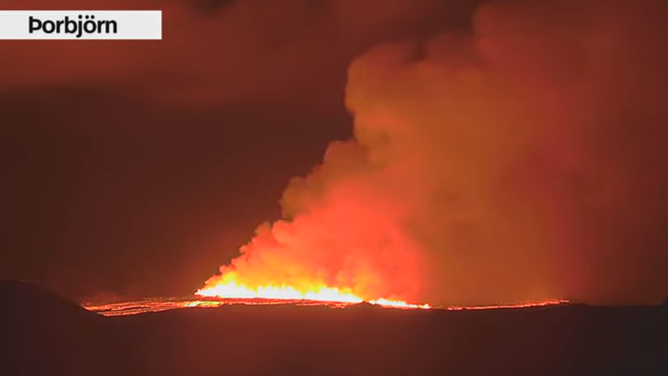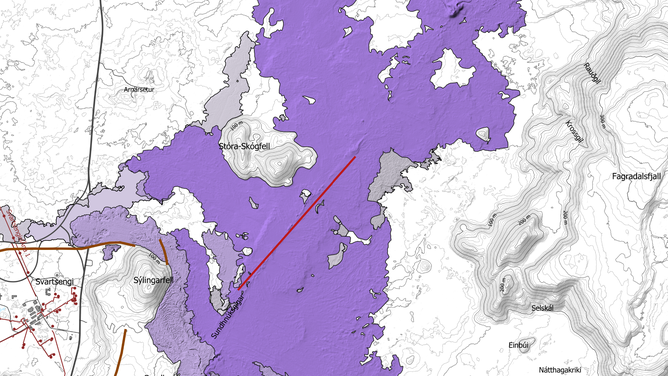Iceland volcano erupts again, spewing lava from fissure
GRINDAVIK, Iceland – Scientists in Iceland are closely monitoring the latest volcanic eruption, which began late Wednesday on the Reykjanes Peninsula.
Cameras positioned around the Sundhnúkur volcano captured stunning images of the eruption lighting up the night sky shortly before midnight.
In response to the event, local authorities declared a state of emergency, which is commonplace after an eruption, and ensured that residents and tourists were safely evacuated from the potential danger zone.
The country dispatched at least one Coast Guard helicopter to the region to monitor the lava flow and assess whether any infrastructure might be compromised during the event.

Lava spews from volcanic fissure in Iceland
(RUV / FOX Weather)
WATCH: ICELAND VOLCANO SUDDENLY ERUPTS AGAIN, LIGHTING UP NIGHT SKY
The area south of the popular tourist destination Blue Lagoon remains a virtual ghost town after most residents were evacuated more than a year ago.
The world-famous geothermal spa has faced intermittent closures as volcanic activity has fluctuated over the past year.
The Blue Lagoon was forced to temporarily cease operations following the latest eruption, with the hope that activity would subside by the weekend.
“Due to a volcanic eruption that commenced in Sundhnúksgígar on November 20, we took the precautionary measure of evacuating and temporarily closing all our operational units. Blue Lagoon will be closed today, Thursday, November 21, and we will reassess the situation throughout the day,” staff at the Blue Lagoon stated.
Early indications from Iceland’s national weather service suggested that the eruption was less extensive than previous events, with strong northerly winds carrying any gas emissions southward, over Grindavík and the ocean.
“Initial reports of lava flow indicate that lava is moving westward, south of Stóra-Skógfell. No lava flow has been observed heading southward toward Grindavík,” Icelandic meteorologists stated.

Map of the latest eruption in Iceland on 11/20/2025.
(Icelandic Meteorological Office / FOX Weather)
WATCH A VOLCANO ERUPT OUTSIDE OF ICELAND’S CAPITAL
The eruption marked at least the seventh episode in the past year in which a fissure released lava.
Earlier in 2024, an eruption damaged the region’s main pipeline, which delivers hot water to homes and businesses that remain occupied.
Situated near the intersection of the Eurasian and North American tectonic plates, Iceland is no stranger to volcanic activity.
The island is home to approximately 130 volcanic mountains, though most are considered dormant.
Source link

